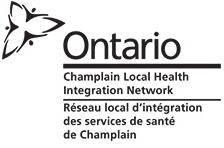Eating Disorders including Anorexia and Bulimia
Introduction
Everyone has times when they don't eat normally; sometimes we eat less, sometimes we eat more. But when a person has such extremes of eating that it causes problems, it may be an eating disorder.
These extremes may range from purposely starving oneself and trying to not eat in order to lose weight, to the opposite extreme of binging or overeating. At either extreme, there are usually feelings of extreme distress or concern about body weight or shape.
A person with an eating disorder may have started out just eating smaller or larger amounts of food than usual, but at some point, the urge to eat ...
What are Eating Disorders?
Eating disorders are a group of potentially fatal conditions where people experience severe problems with their eating, which affect them physically and emotionally.
Things may start off as a diet, where your child is doing something to try and feel better about him or herself. From there, however, it can quickly escalate into a dangerous, life threatening eating disorder.
On the outside, you may notice the visible signs of an eating disorder in your child, such as not eating, binge-eating on food, vomiting, or being obsessed with how his or her body looks. On the inside, your ...
What are eating disorders (EDs)?
Eating disorders are different types of unhealthy eating patterns. Statistics tell us that EDs happen more often in girls and young women, but we're learning that more and more boys and men experience EDs too. For the most part, they involve eating either too much or too little. Other behaviours can also come along with disordered eating, like exercising too much, obsessing about food, throwing up, or taking laxatives to get rid of food you've eaten.
What types of eating disorders are there?
The most common types are:
1. Anorexia Nervosa
Also known as Anorexia. ...
What are Food Cravings?
Human beings need to eat in order to live, and as a result, our body signals through cravings and urges that we need to eat. For most of human history, humans spent most of their days moving outside, and would expend large amounts of energy in hunting and gathering. Our traditional diet was high in natural grains, vegetables, fruits and lower amounts of meat.
Food cravings helped hunter gatherers survive:
Cravings for sweet foods were a signal that a ripe fruit was ready to be eaten; Cravings for salty foods helped ensure we had enough salt in our diet; for most of human history, salt was extremely hard to find and ...
Introduction
Eating disorders, now considered the third most common chronic illness among adolescent girls, are serious emotional problems that are manifested through weight and food issues. They can have life-threatening consequences. Behaviors that include dieting, bingeing, self-induced vomiting, using diet pills and laxatives are seen in more than 27% of girls aged 12 to 18 years.
Eating disorders develop in boys and girls for a lot of different reasons. Eating disorders may stem from anxiety or depression, or from feeling a loss of control due to a family situation, trauma, or other stresses. Those who tend to develop eating ...






